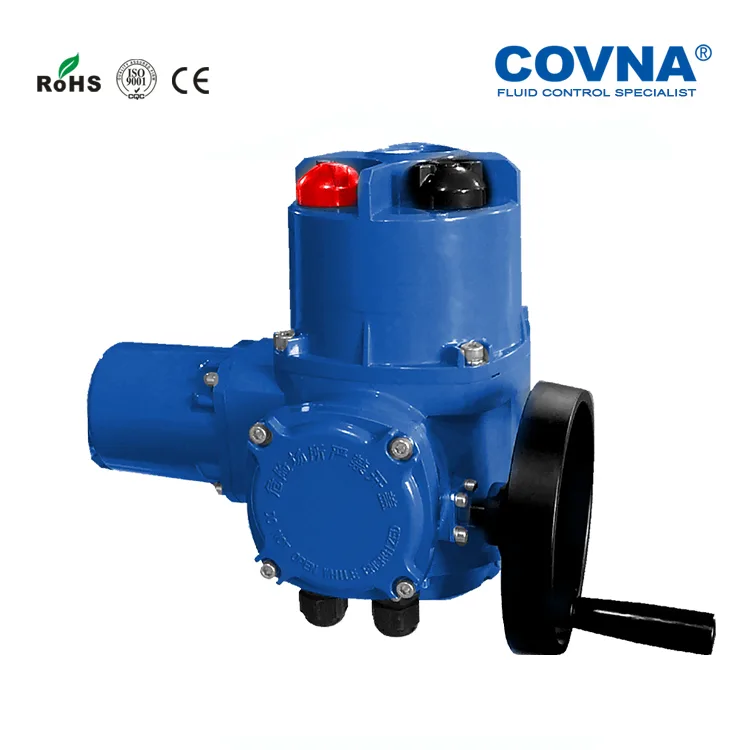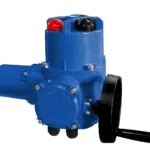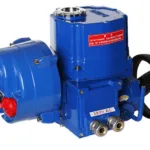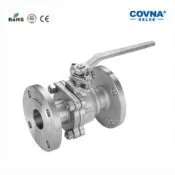





COVNA QT Series Explosion Proof Electric Actuator
Explosion Proof Electric Actuator
has a good sealing performance. Widely used in gas industry, LPG industry and so on. Using 110V/220V/380V AC as supply power. With manual override. Manual control in case of power failure.
Manufacturing explosion-proof electric actuator with 270-degree rotation. For your oil & gas, or fire industry actuation solution.
Consult us to get the best price!
Model
- Supply Power: 3PH: AC380V、AC415V、AC440V; ±10% 50/60Hz; 1PH: AC110V、AC220V、AC24V; ±10% 50/60Hz; DC: DC24V(±10%)
- Basic Error: 2.5%
- Outdoor Protection Class: IP65
- Temperature: -20℃ to 60℃
- Height Above Sea Level: ≤1000m
- Humidity: ≤90% (25℃)
- Model: QT Series
Benefits Of Explosion-proof Electric Valve Actuator:
The COVNA Exd II CT4 electric explosion-proof actuator is equipped with an explosion-proof module, which can effectively enhance the explosion-proof performance of the electric actuator and improve the safety of the project. Industrial automation is achieved by receiving or feeding back signals. It is widely used in oil and gas, metallurgy, mining and other dangerous industries to ensure the personal safety of personnel.
Description:
● The actuators can be either remotely controlled or locally controlled. They are widely used in the fields such as oil, chemistry, power generation, water treatment, paper making.
● The protection class is IP65, and the explosion proof class is Exd II CT4
Technical Parameters:

Dimension Of QT Explosion-proof Electric Actuator:
1.Oil and Gas Industry
Pipeline Flow and Pressure Control: Used for flow and pressure control in natural gas and oil pipelines to ensure stability during transportation.
Gas and Liquid Distribution Systems: Regulates the flow of gases or liquids, ensuring precise control under various operating conditions.
Automation of Distribution Systems: Used in refineries and natural gas processing plants to automate fluid distribution and regulate the reaction processes.
2.Chemical and Petrochemical Industry
Reactor Pressure and Flow Control: Used in chemical reactors, storage tanks, and other equipment to control pressure and flow, ensuring stability in the chemical reaction process.
Flow/Pressure Regulation: Regulates the flow of liquids or gases in processes such as polymerization, refining, and distillation to ensure efficient production.
Steam Control: Regulates the flow and pressure of steam in steam generators and distribution systems.
3.Water and Wastewater Treatment
Water Flow Control: Regulates water flow and pressure in water supply and wastewater treatment systems to ensure normal operation.
Gas and Chemical Additions: Regulates the flow of chemicals or gases (such as chlorine or ammonia) added during the water treatment process.
4.HVAC (Heating, Ventilation, and Air Conditioning) Systems
Temperature Control and Airflow Regulation: Used in air conditioning systems to regulate the flow of cooling or heating fluids to maintain the desired temperature.
Pressure and Airflow Regulation: Adjusts the flow and pressure of air in ventilation, air conditioning, and humidification systems to ensure indoor comfort.
5.Food and Beverage Industry
Liquid Flow Control: Precisely controls the flow of liquids in processes such as brewing, dairy production, and beverage bottling.
Temperature and Pressure Regulation: Regulates temperature and pressure during heating, cooling, and sterilization to ensure product quality and safety.
6.Pharmaceutical Industry
Precision Flow Control: Regulates the flow of liquids and gases in pharmaceutical manufacturing processes to ensure precise control of process parameters.
Pressure Control: Adjusts pressure in cleaning and sterilization systems to ensure stable system operation.
7.HVAC Systems
Airflow and Temperature Control: Controls the flow and temperature of air to adjust environmental conditions, ensuring comfort and energy efficiency inside buildings.
8.Steel and Metallurgical Industry
Gas Flow Control: Precisely adjusts the flow of gases such as oxygen and nitrogen during smelting and heating processes to ensure stable furnace temperatures and chemical reactions.
Cooling Fluid Flow Regulation: Regulates the flow of cooling fluids in cooling systems to ensure temperature control of equipment.
9.Thermal and Power Industry
Steam and Water Flow and Pressure Control: Regulates the flow of steam and water in boiler systems, heat exchangers, and power plants to ensure efficient operation of thermal systems.
10.Mining Industry
Slurry Flow Regulation: Adjusts the flow and pressure of slurry during transportation and separation processes to ensure efficient extraction and processing of minerals.








